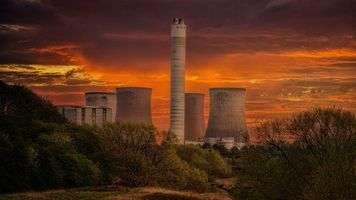Nuclear power can fulfil 1/3 of UK hydrogen needs: NIA

The Nuclear Industry Association (NIA), the trade association for the civil nuclear industry in the UK, has published a hydrogen roadmap, stating that the nuclear power can satisfy one-third of the country’s hydrogen needs by 2050.
The association estimates that 12-13 GW of nuclear reactors- using electrolysis, steam electrolysis and thermochemical water splitting- could generate 75 TWh of hydrogen by 2050, equivalent to 1/3 of the total demand. The roadmap pointed out that steam methane reformation method, although a low cost, emits 10 kg of CO2 per KG/H2.
The Climate Change Committee (an independent non-departmental public body and advises the UK government on climate policy) assess that the UK needs to generate four times as much clean power by 2050 and 225 TWh of low-carbon hydrogen to complete its decarbonisation.
Nuclear power can be used to make hydrogen, but it is not considered green. There are different colour codes to identify the sources of hydrogen. These labels are based on the type of energy used to produce hydrogen. Purple, pink and red hydrogen are all linked to nuclear power.
The roadmap also makes a recommendation to classify hydrogen created through nuclear power as green hydrogen because it is emissions-free and would have a very low lifecycle carbon footprint.
Nuclear’s hydrogen roadmap shows the way large-scale and small modular reactors (SMRs) can generate electricity and heat to produce hydrogen. The report noted the high cost of hydrogen. It also recommended funding for electrolyser with a suggestion of a new financing model to control the production costs.
Tom Greatrex, NIA Interim Chief Executive, said that nuclear power should be right at the heart of green hydrogen production, alongside renewable technology. He added that the government recognised the potential, and NIA is looking forward to working with them and other partners to create a robust framework for green hydrogen production.
The roadmap also profiles the case study of EDF Energy’s Hydrogen to Heysham (H2H) project. The H2H project examined the feasibility of using nuclear power from the Heysham power stations to produce low carbon, low-cost hydrogen using on-site electrolysers for a range of potential local applications.
